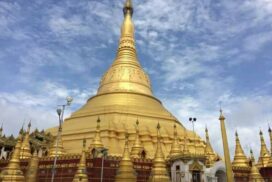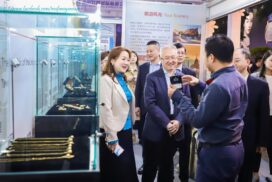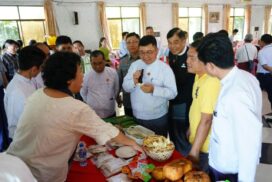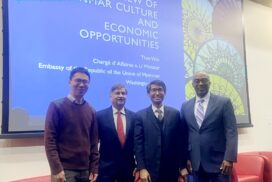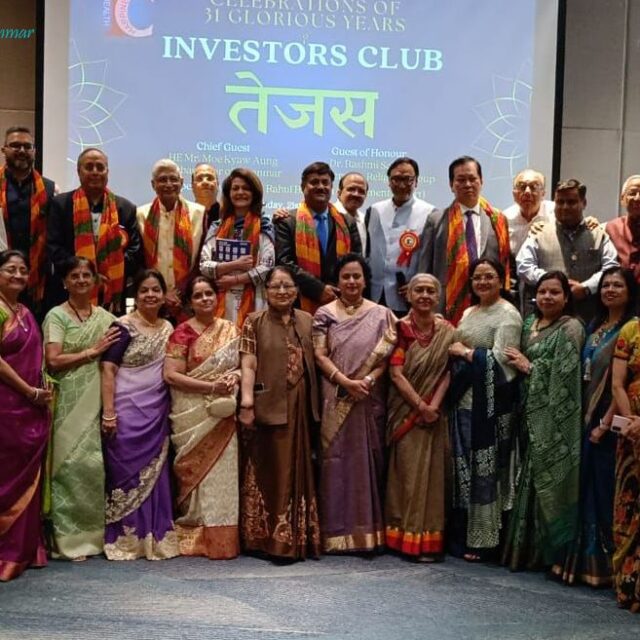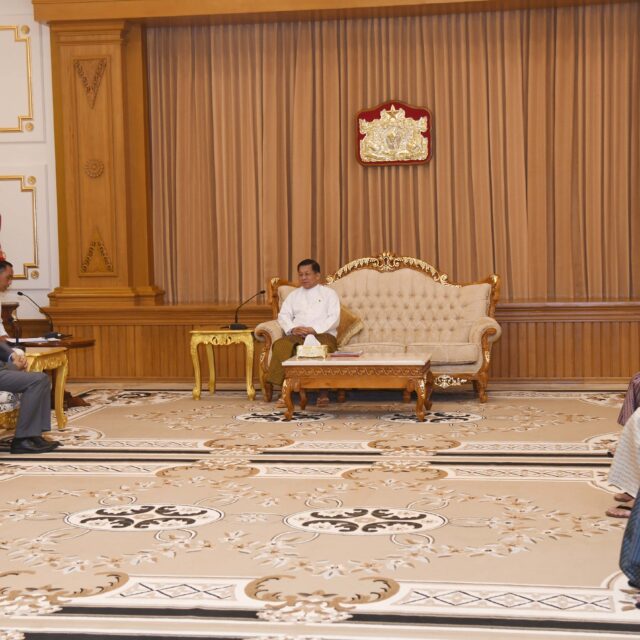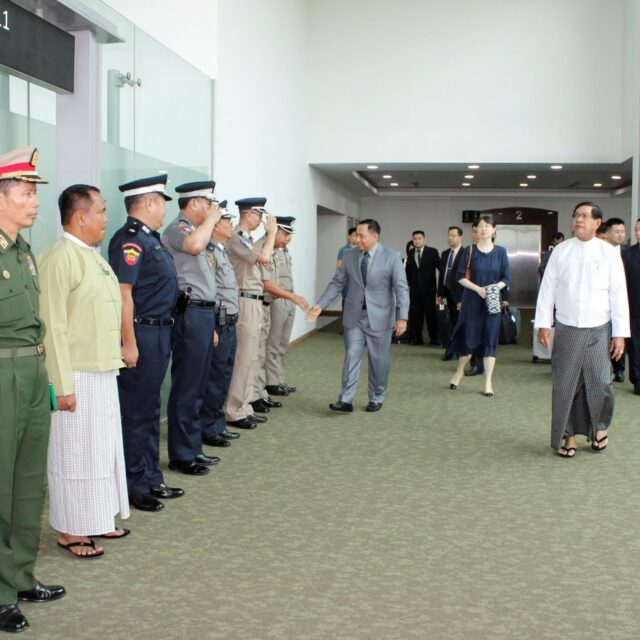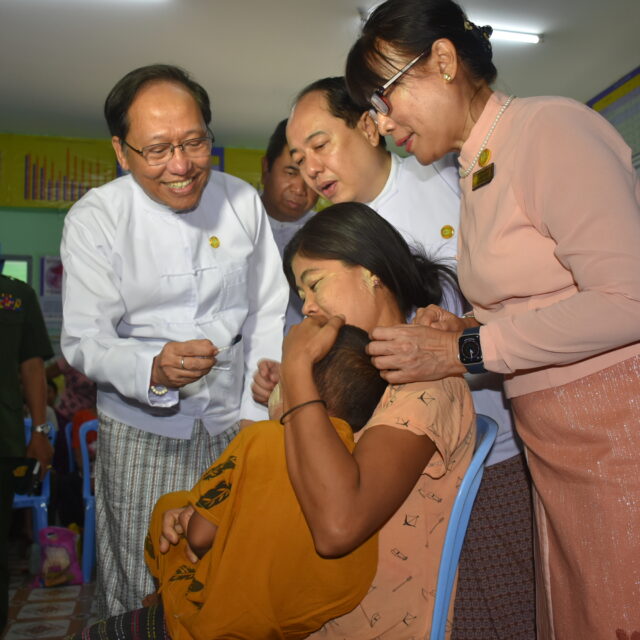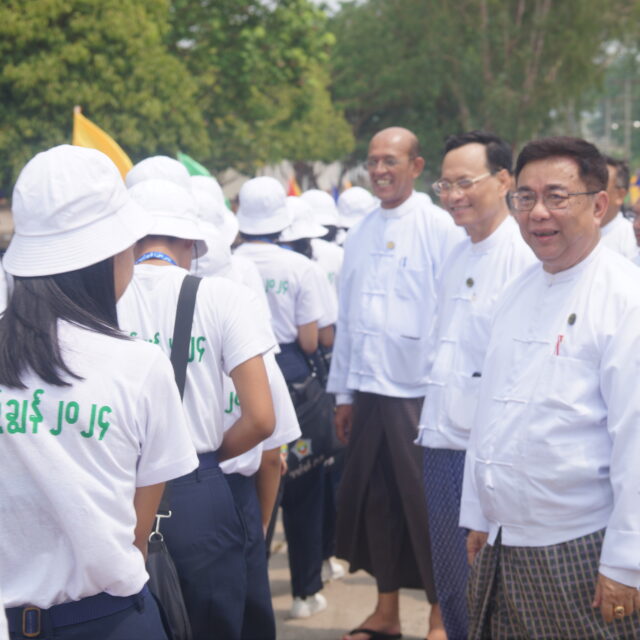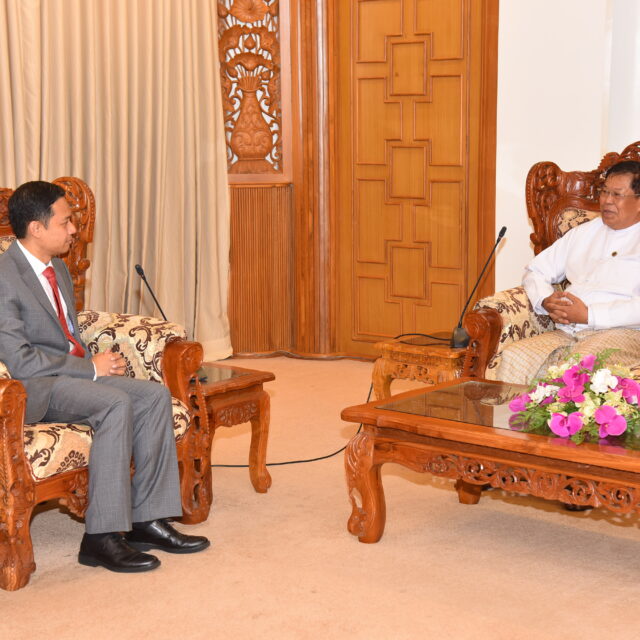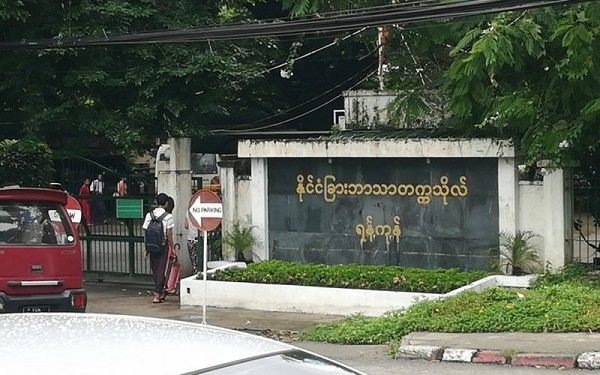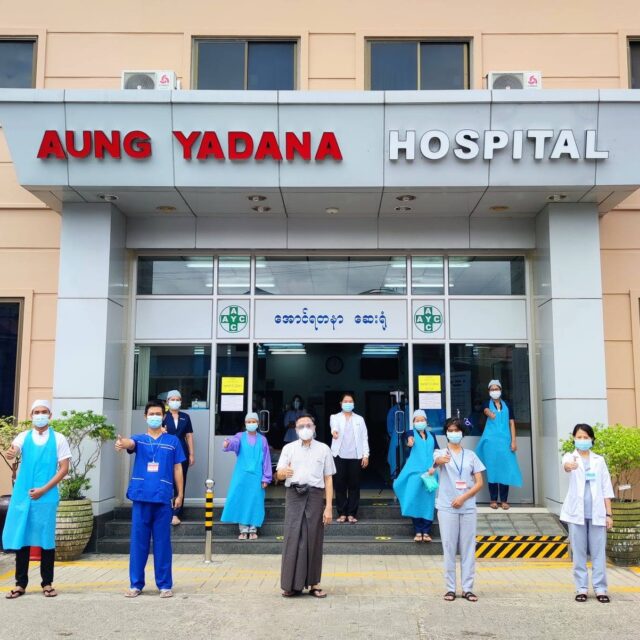By Dr Nanda Hmun
Permanent Secretary (Retired)
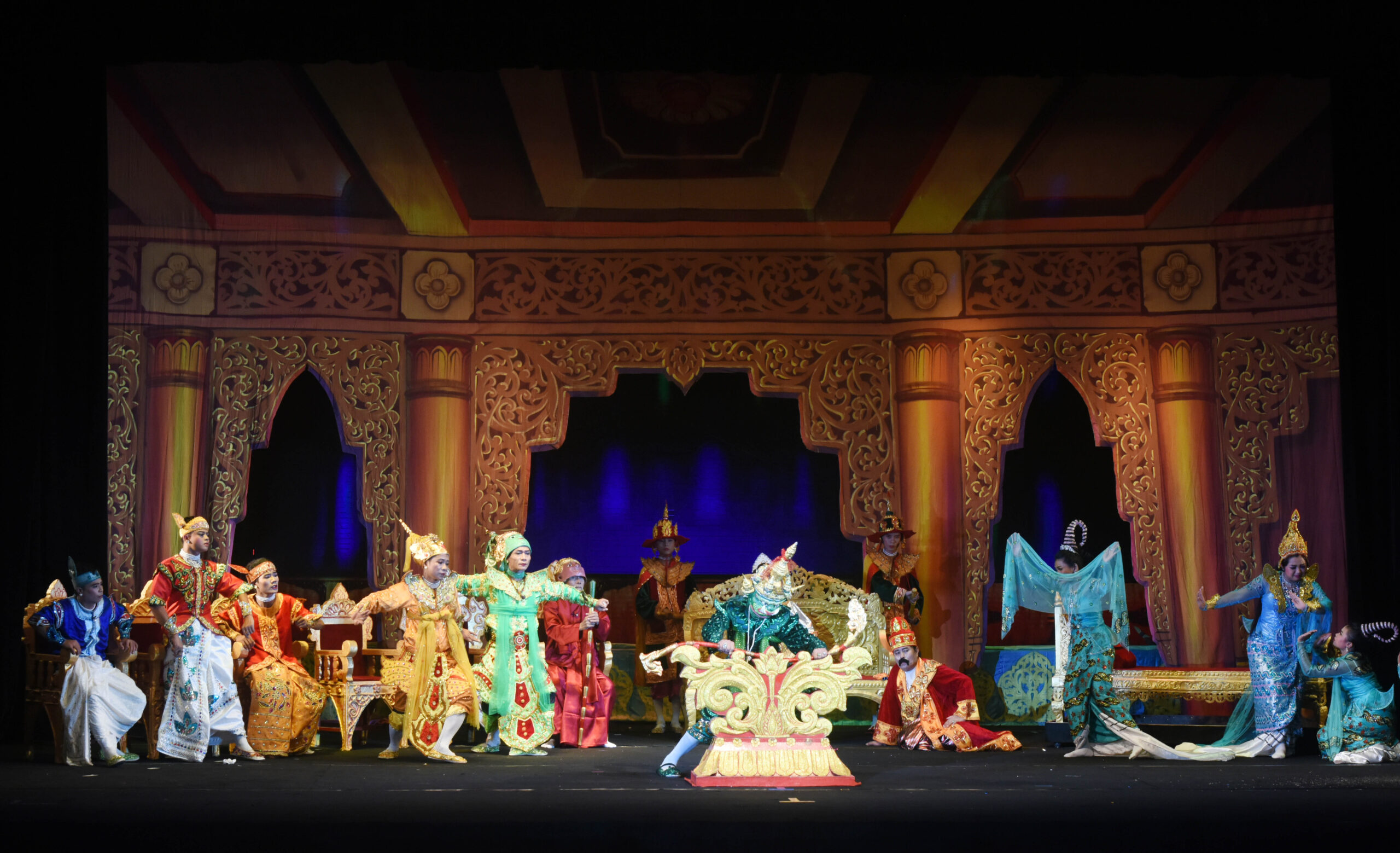
Political Objectives
• Stability of the State, community peace and tranquillity, the prevalence of law and order;
• National Reconciliation;
• The emergence of a new enduring State Constitution;
• Building a new modern developed nation in accordance with the new state constitution
Social Objectives
• Uplift of the morale and morality of the entire nation;
• Uplift of national prestige and integrity and preservation and safeguarding of cultural heritage and national character;
• Uplift of dynamism and patriotic spirit;
• Uplift of health, fitness and education standards of the entire nation
One of the Social Objectives “Uplift of national prestige and integrity and preservation and safeguarding of cultural heritage and national character” has become the leading policy of the Ministry of Culture. It is clearly noted that there has been no special attention nor forming national culture or promulgating of laws for cultural preservation and dissemination of culture before its formation and the years that followed. There can be seen only the general view of culture preservation and safeguarding of ethnic cultures in the early days of its establishment in the 1950s. After the Two Constitutions: 1947 and 1974, historical events in the political sphere can be obviously seen as numerous, complicated, fragile, spilt, and delicate. They were also intertwined with economic, social, international relations and cultural spheres too. The Independence of Myanmar has suffered defections not only on ideological but also on racial grounds.
The ultimate objective of the Government and the people of the Union of Burma, as embodied in the Constitution, is to create a democratic Socialist State. The tyranny and oppression inherent in these two systems must not be allowed in the Socialist State and devise a way of life which will combine full political rights, economic security and a high standard of living with spiritual uplift and morality. It must not only guarantee religious freedom but also provide an opportunity for each individual to exercise his religious rights and beliefs at the highest possible plane. Socialism in Burma must be fully harmonized with the religious beliefs and cultural background and heritage of the people. This new era must not be imposed on the people from above. It must be set up by the people themselves and must harmonize with their culture, religious beliefs and traditions. This new era is none other than the Pyidawtha State to which the people of Burma had pledged themselves.
In accord with Articles 21 and 22 of the Constitution of the Union of Burma 1974, the National Culture Policy reflected in it emphasized the assimilation of the nationalities to be under one community as unity in diversity. The policy emphasizes “Burmese way to Socialism” a Myanmar identity for the state is more prior. It defines as guidelines for ‘national culture’ too. Since the Constitution allows all citizens to be equal before the law, regardless of race, religion, status or sex and enjoy the opportunities and benefits derived from their labour and develop and promote unity, mutual assistance and respect among the national races, cultures of all national races have been prior and promoted.
The 7-step Road Map is one of the milestones of SPDC (2003) for its commitment to driving building a modern, developed and democratic nation it highlighted only for the convening of the National Convention and it includes:
1. Reconvening of the National Convention that has been adjourned since 1996;
2. After the successful holding of the National Convention, step-by-step implementation of the process necessary for the emergence of a genuine and disciplined democratic state;
3. Drafting of a new constitution in accordance with basic principles and detailed basic principles laid down by the National Convention;
4. Adoption of the constitution through a national referendum;
5. Holding free and fair elections for Pyithu Hluttaws (Legislative bodies) according to the new constitution;
6. Convening of Hluttaws attended by Hluttaw members in accordance with the new constitution;
7. Building a modern, developed and democratic nation by the state leaders elected by the Hluttaw; and the government and other central organs formed by the Hluttaw,
It is noted that the way forward for a brighter future for the whole country is based on the objective conditions in the country as well as the aspirations of the entire people. During the Interim Period, the SLORC and SPDC had tried their utmost effort not only for peace and stability and tranquillity but also the establishment of the first and foremost cultural institution – the University of Culture in 1993 which is remarkable.
Cultural Administration and Cultural Development
According to Myanmar’s own perception and conception, her socioeconomic system, technological development and especially political ideology which reflect in its national policy are the factors that become to be determined for its cultural policy and methods. Issues related to the impacts of institutional, administrative and financial stress on the need, increasingly stressed for exchanging experiences and information, especially on technical aspects.
Myanmar culture has flourished for almost 2,000 years and Myanmar has currently developed over time and values within the culture which have undergone modification and impact of globalization. Especially for being under the British for more than a century and those civil unrests taking place for more than 70 years, Myanmar culture and tradition have many challenges to be survived and succeeded in blending other elements of our own nationalities into their own way of life with some observable dualism instead of being totally westernized and influenced by other alien cultures.
National Stakeholders and Culture Preservation in 21st Century
(i) Strong Stem of Myanmar Culture Preservation
The role of Monastic Education (Hpone daw gyi thin Pyin nya yay) Education System taught by Myanmar Buddhist Monks, established in the early days of Myanmar monarchy has been significantly spread out in the country even in the 21st century. The Syllabus focused on Myanmar ways and manners mingled with Myanmar history and the Jataka stories. They are the centres to foster better social integration (both in rural and urban areas), obligations of Myanmar societies, unity and peace. This is the place where Buddhist values like generosity, loving-kindness, reciprocal attention and appreciation can be imparted. Buddha’s teachings of non-violence, compassion, generosity, tolerance, etc can be taught and generated merit and practice too.
Before Independence and After
During the colonial period, the future of the Burmese nation was seen as closely tied to the future of the Buddhist dispensation. For the ethnic Burmese people, Burmese nationalism was almost inseparable from their Buddhist identity. Indeed, a common slogan of the independence movement was “To be Burmese means to be Buddhist”. One of the first and most influential of these nationalist Buddhist organizations was the Young Men’s Buddhist Association (YMBA), founded in 1906. They lead the role of preserving Myanmar Buddhist culture as much as they can since its establishment.
To carry out the series of cultural preservation projects and training schools/centres for cultural awareness and promotion only established after Independence in 1963 as the School of Fine Arts and School of Performing Arts in Yangon and Mandalay led by some leading artists and artistes under the guidance of Ministry of Union Culture. To this purpose, it was commonplace for schools and public institutions to use the arts as an opportunity for inter-ethnic interaction and for symbolic displays of multiculturalism through the showcasing of traditional ethnic dances alongside each other. The distribution of State funds for arts groups was also ad hoc, dispensed as the Project Grant by the then Ministry of Culture, without any long-term view to nurture the relationship between arts practitioners and the state.
Culture Dissemination and Promotion of Myanmar Culture: the Role of the Ministry of Culture
Ministry of Culture (renamed in 1972) with its mission: “to love and cherish the country and the people by taking pride in own good traditions as well as by preserving, exposing and propagating Myanmar cultural heritage throughout lengthy Myanmar and good traditions and customs”, is preserving, promoting and disseminating Myanmar culture and tradition with its main respective departments.
The fall of Myanmar Theatrical Performances with its poor technological inventories and unskilled dancers and low budgeting for costumes and performing programmes can be seen since the 1980s. It is only for the sake of the government and its Ministry of Culture to pay more attention and nurture the burgeoning artistes. To handover those cultures and traditions especially performing arts for systematic teaching to a good morale new generation, the University of Culture (established in 1993) under the Ministry of Culture has the following objectives: –
• Preservation and dissemination of Myanmar cultural heritage;
• Research and training the aim of Myanmar’s traditional culture and turning out outstanding artistes;
• Teaching traditional cultures and customs of indigenous national races at the university
• Upholding the spirit of nationalism and patriotism; Upbringing good artistes with high morality and nobility.
Under the leadership of BSPP (Burma Socialist Programme Party), the Ministry of Union Culture has the following policies: –
(1) To safeguard the National Culture; (National Culture is the Culture of all nationalities in Burma)
(2) To implement all cultural activities which support the Burmese Way to Socialism;
(3) To develop and upgrade the research on Myanmar Culture to be abreast with international standards;
(4) To study the cultures of other countries
To carry out the Culture Policy, the Union Culture Council of the Ministry of Culture observes the following actions: –
(1) To develop the genuine and envisioned Myanmar culture in its own way by sustaining the Myanmar Fine Arts and Performing Arts;
(2) To be the culture and arts supportive for the state and people;
(3) To be edutainment instead of entertainment and arts not for art’s sake but to give prior both to arts and people;
(4) To campaign and educate more on the ideology of people and their desire to be in line with changing way of a developing country;
(5) To keep and support the non-disintegration of the national races and consolidation of national sovereignty ;
(6) To abolish the alien cultures which are not in line with Myanmar’s Culture and society;
(7) To nurture civic duties and good behaviours and characters;
(8) To sustain and supportive for the national unity of the state by creating works on fine arts;
(9) To try towards the development and raising the standard of arts and culture

